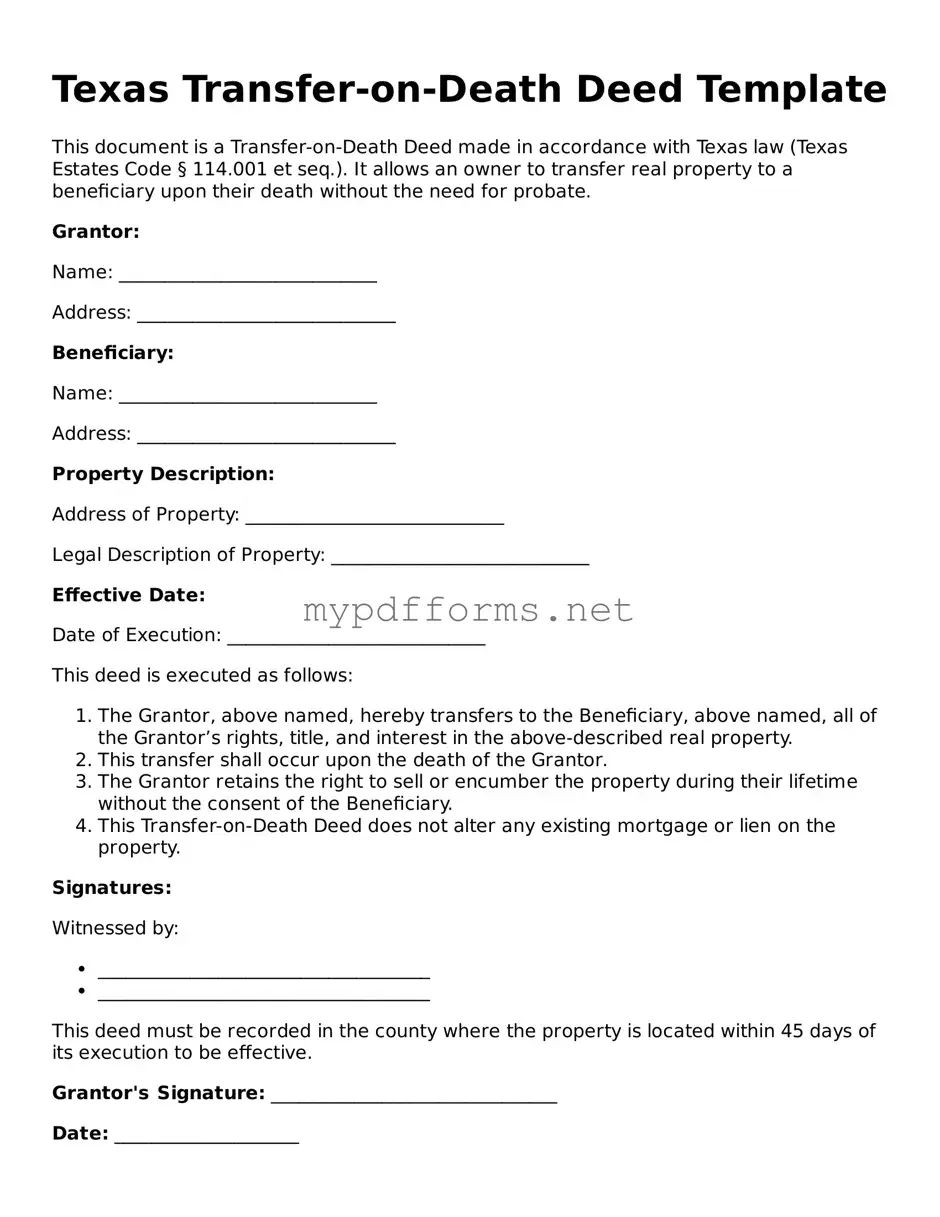Attorney-Verified Transfer-on-Death Deed Document for Texas
A Texas Transfer-on-Death Deed form is a legal document that allows property owners to designate beneficiaries who will automatically inherit their real estate upon their death, bypassing the probate process. This tool provides a straightforward way to ensure that your property is transferred according to your wishes, making the process smoother for your loved ones. If you're ready to secure your property for future generations, consider filling out the form by clicking the button below.
Modify Document Here
